Winterproof Your Bike
This time of year, some cyclists will hang up their bike for the winter whilst others will be planning and preparing to cycle through it the cold, wet season. If you are lucky enough to have a specific winter bike, you will probably already have it winterproof. Ready for riding in the adverse weather conditions served up by Autumn and Winter months. If however your summer bike is actually your 'all-year-round' bike, here is our AATR guide on how to winterproof your road bike ready for winter riding.
Mudguards
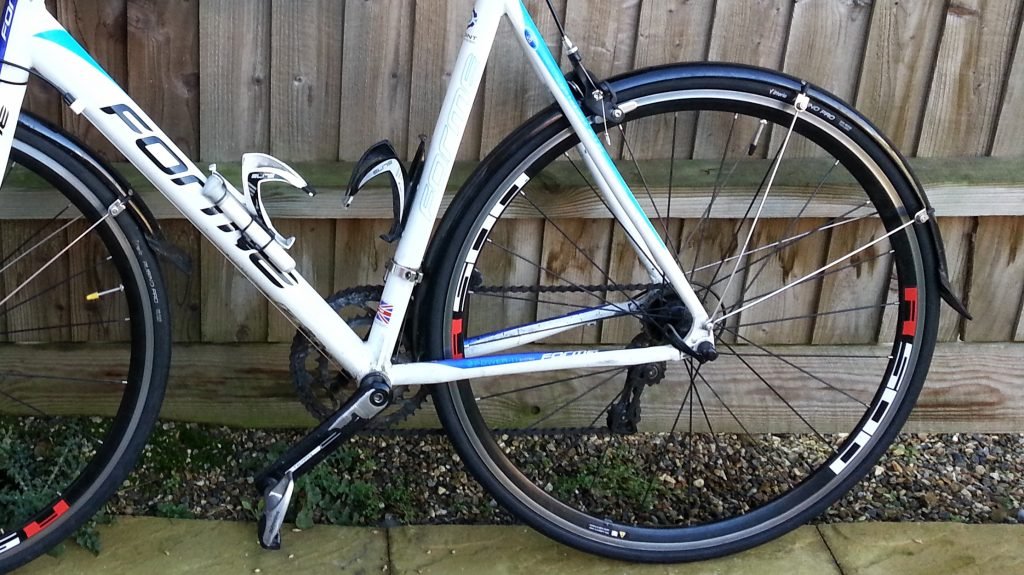 For most road bike lovers, the thought of fitting mudguards to their pride and joy is....well, just wrong! But mudguards are one of the more important additions to make to your bike this Winter. They are designed to protect you (your backside), your feet. If you ride in a group or club, mudguards will also protect riders behind you from the water and mud sprayed up from the road. Some clubs make mudguards compulsory for winter training. A full-length set of mudguards can also protect your frame and more importantly your drivetrain. Mud, salt and grit on the roads can seriously affect the performance of your gears. Some road bikes will have mudguard bosses or attachments on the forks and chainstays but if your bike doesn't, some manufactures make easy fit mudguards which attach to your frame with rubber O-Rings or at the brake caliper bolt. Clearance can be an issue with some bike frames so mudguards like the Crud Road Racers can be cut down and modified. SKS Raceblades are another option as they cover the wheel and stop at the frame and fit many road bikes.
For most road bike lovers, the thought of fitting mudguards to their pride and joy is....well, just wrong! But mudguards are one of the more important additions to make to your bike this Winter. They are designed to protect you (your backside), your feet. If you ride in a group or club, mudguards will also protect riders behind you from the water and mud sprayed up from the road. Some clubs make mudguards compulsory for winter training. A full-length set of mudguards can also protect your frame and more importantly your drivetrain. Mud, salt and grit on the roads can seriously affect the performance of your gears. Some road bikes will have mudguard bosses or attachments on the forks and chainstays but if your bike doesn't, some manufactures make easy fit mudguards which attach to your frame with rubber O-Rings or at the brake caliper bolt. Clearance can be an issue with some bike frames so mudguards like the Crud Road Racers can be cut down and modified. SKS Raceblades are another option as they cover the wheel and stop at the frame and fit many road bikes.
Tyres
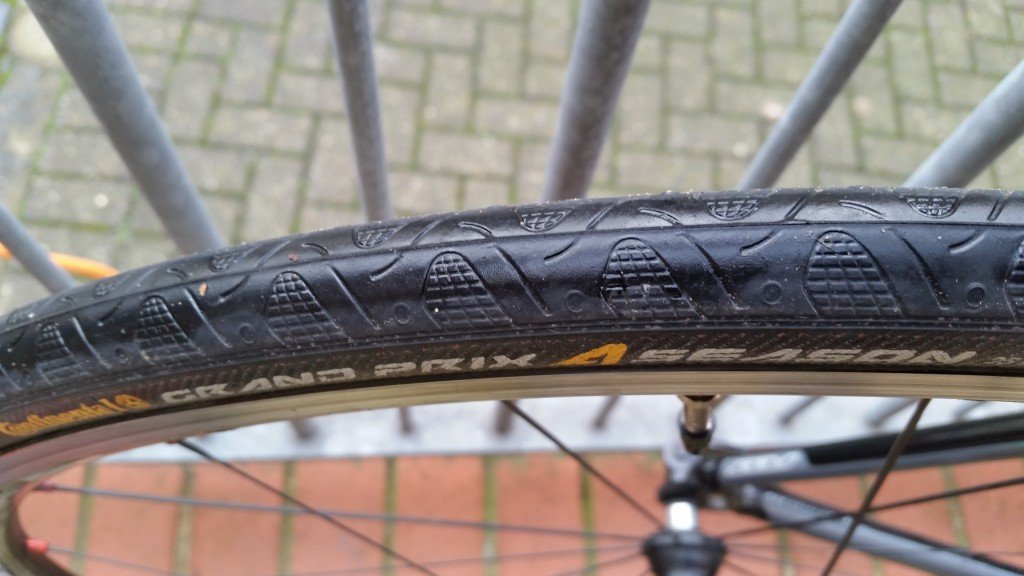 Do you really need to change your bike tyres? Well, to be fair, no not necessarily but we would recommend it. The chances are that your lightweight 'summer' road tyres have a soft rubber compound and a (semi) slick tread. Changing them out to a wider tyre will offer up more traction on what are possibly going to be wet and slippery winter roads. If you run 23 or 25mm tyres, you may opt for a wider 28mm or even a 32mm tyre for winter riding. But it is important to check your bike frame and fork clearance before investing in winter tyres. Choose something that more durable and hard wearing. Winter road tyres will often be heavier and offer up a harder ride but they usually provide an extra layer of protection against punctures. This means you are less likely to be stood by the side of the road, on a cold and wet day fixing a puncture. It also is worth dropping your tyre pressure slightly for winter riding to provide better traction, especially on wet roads. The usual recommendation is to drop 10-20 psi for riding in the wet.Review: Continental GrandPrix 4 Season Tyres
Do you really need to change your bike tyres? Well, to be fair, no not necessarily but we would recommend it. The chances are that your lightweight 'summer' road tyres have a soft rubber compound and a (semi) slick tread. Changing them out to a wider tyre will offer up more traction on what are possibly going to be wet and slippery winter roads. If you run 23 or 25mm tyres, you may opt for a wider 28mm or even a 32mm tyre for winter riding. But it is important to check your bike frame and fork clearance before investing in winter tyres. Choose something that more durable and hard wearing. Winter road tyres will often be heavier and offer up a harder ride but they usually provide an extra layer of protection against punctures. This means you are less likely to be stood by the side of the road, on a cold and wet day fixing a puncture. It also is worth dropping your tyre pressure slightly for winter riding to provide better traction, especially on wet roads. The usual recommendation is to drop 10-20 psi for riding in the wet.Review: Continental GrandPrix 4 Season Tyres
Lights
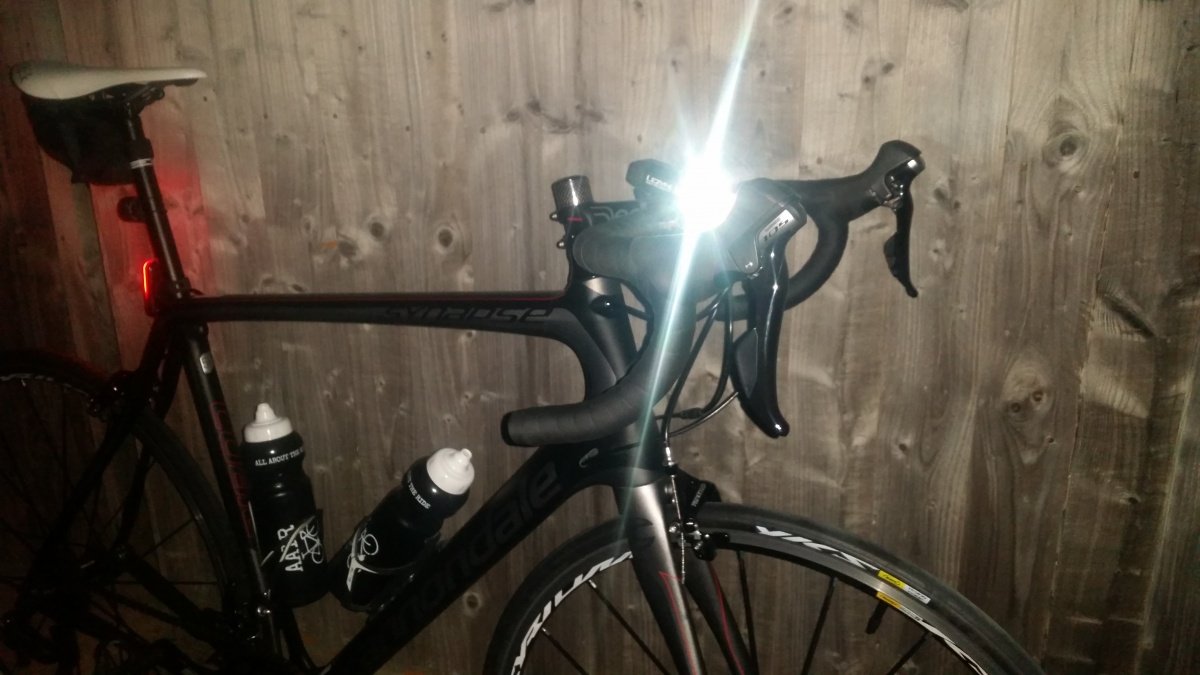 Probably the most important thing you should have fitted to your bike this winter. At AATR we ride with at least a rear light all year round. This is because whether it is a dark November commute home or a sunny afternoon ride in July, lights attract the attention of other road users. On a dull and gloomy day, we highly recommend you ride with at least a rear light. Compact safety lights are great to fit on leave on your bike and are ideal for running during the day - whatever the weather. When it comes to front lights, think about whether you need a light to be seen or a light to see where you are going. If you ride or live somewhere urban, the chances are the roads are lit by street lights and visibility is fine. In this case, a set of lights for other road users to see you are fine. However, if you ride on roads that aren't so well-lit, you need to invest in something that has a little more power and a much brighter light beam. Prices can start from just a few pounds for a set of simple safety lights and go right up to £200+ for a super-bright front light. We advise you invest in the best you can afford. As well as a main set of (front & rear) lights, safety lights can act as a spear in case the main lights fails.Buyers Guide: Read Bike Lights
Probably the most important thing you should have fitted to your bike this winter. At AATR we ride with at least a rear light all year round. This is because whether it is a dark November commute home or a sunny afternoon ride in July, lights attract the attention of other road users. On a dull and gloomy day, we highly recommend you ride with at least a rear light. Compact safety lights are great to fit on leave on your bike and are ideal for running during the day - whatever the weather. When it comes to front lights, think about whether you need a light to be seen or a light to see where you are going. If you ride or live somewhere urban, the chances are the roads are lit by street lights and visibility is fine. In this case, a set of lights for other road users to see you are fine. However, if you ride on roads that aren't so well-lit, you need to invest in something that has a little more power and a much brighter light beam. Prices can start from just a few pounds for a set of simple safety lights and go right up to £200+ for a super-bright front light. We advise you invest in the best you can afford. As well as a main set of (front & rear) lights, safety lights can act as a spear in case the main lights fails.Buyers Guide: Read Bike Lights
Saddlebag
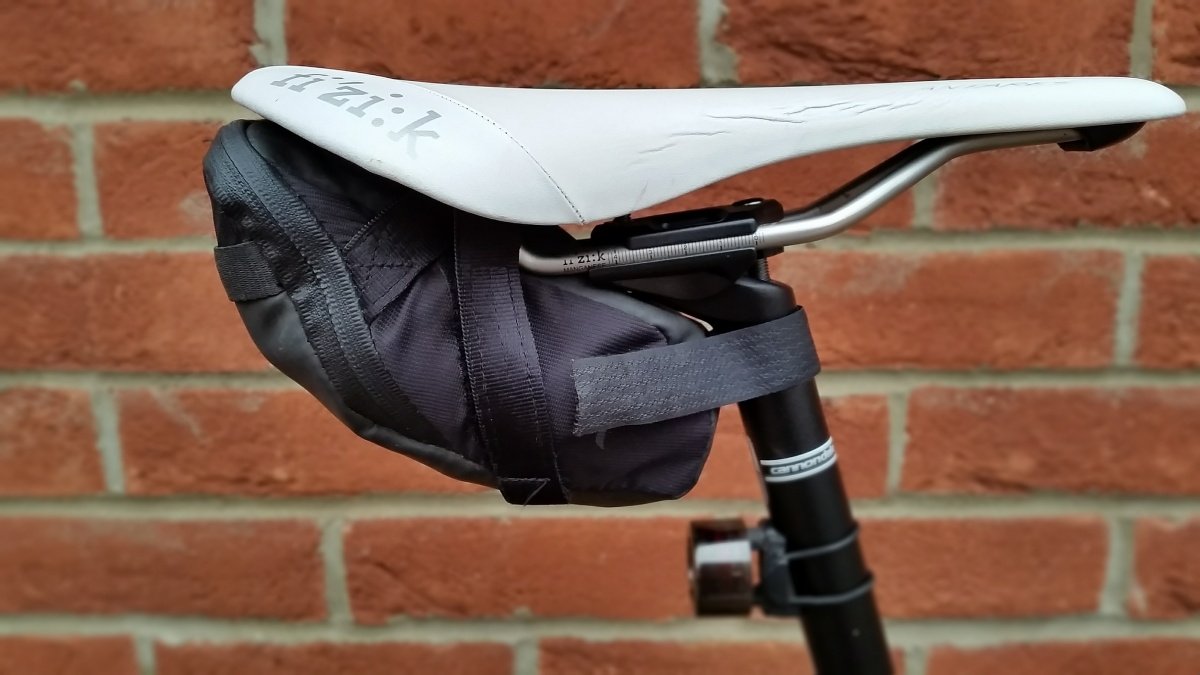 Love them or hate them a saddlebag or seat-pack is excellent for carrying your tools, inner-tubes and repair kits during the Winter cycling. Whether you are riding 5 miles to work or on a 50 mile weekend club ride. If size is an issue for you, think about what you are really going to need to be carrying. This pack has 2x spare tubes, a multi-tool, a set of patches and a CO2 inflator and cartridge. Personally I have this on the bike all year round.
Love them or hate them a saddlebag or seat-pack is excellent for carrying your tools, inner-tubes and repair kits during the Winter cycling. Whether you are riding 5 miles to work or on a 50 mile weekend club ride. If size is an issue for you, think about what you are really going to need to be carrying. This pack has 2x spare tubes, a multi-tool, a set of patches and a CO2 inflator and cartridge. Personally I have this on the bike all year round.
Puncture Repair Kit
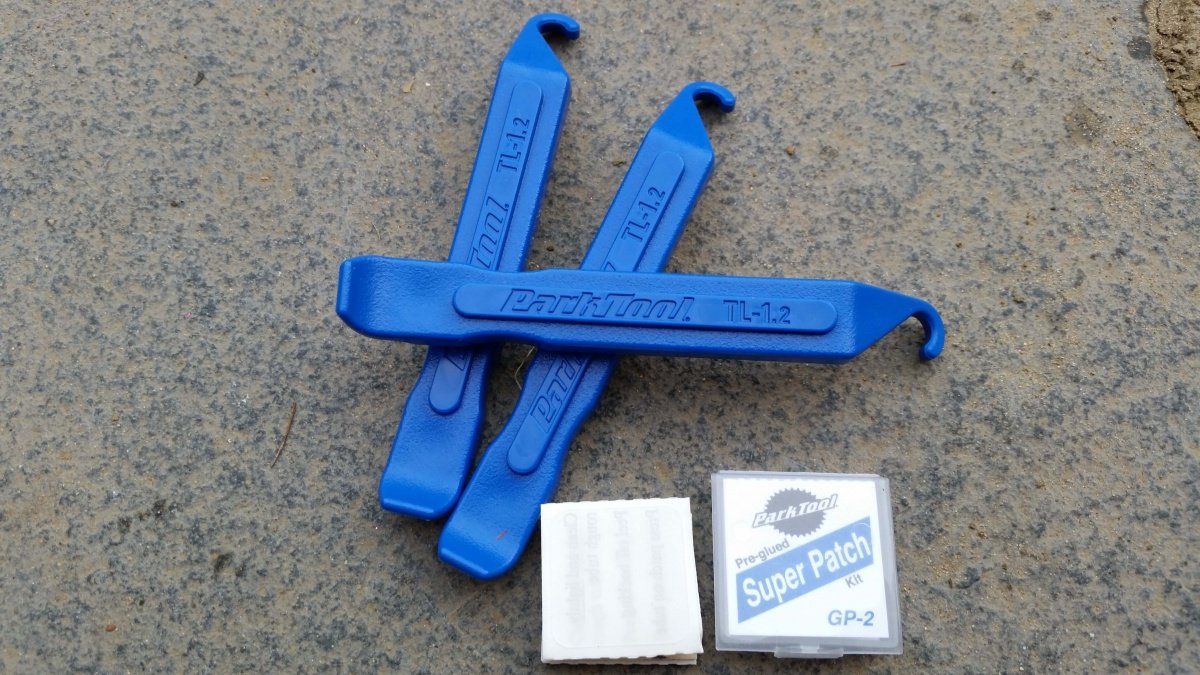 Sadly and incredibly frustratingly, punctures happen so you should always carry some kind of repair kit or spare tubes with you. You can take measures to try and prevent getting a puncture by choosing harder and more durable tyres as we earlier mentioned. You can use tyre-liners which are thin plastic stips which sit between the inside of your tyre and the inner-tube. Some people swear by slime filled tubes which are inner-tubes containing a liquid rubber that seals small puncture holes. If you are running wheels which are tubeless-ready, it might be worth thinking about tubeless tyres as a winter option. As the name suggests, these tyres have no inner-tube but instead us a liquid sealant which runs inside the tyre - plugging the puncture. However, if you are not running tubeless (ready) wheels, this will be an pricey upgrade, especially for winter.
Sadly and incredibly frustratingly, punctures happen so you should always carry some kind of repair kit or spare tubes with you. You can take measures to try and prevent getting a puncture by choosing harder and more durable tyres as we earlier mentioned. You can use tyre-liners which are thin plastic stips which sit between the inside of your tyre and the inner-tube. Some people swear by slime filled tubes which are inner-tubes containing a liquid rubber that seals small puncture holes. If you are running wheels which are tubeless-ready, it might be worth thinking about tubeless tyres as a winter option. As the name suggests, these tyres have no inner-tube but instead us a liquid sealant which runs inside the tyre - plugging the puncture. However, if you are not running tubeless (ready) wheels, this will be an pricey upgrade, especially for winter.
Pump
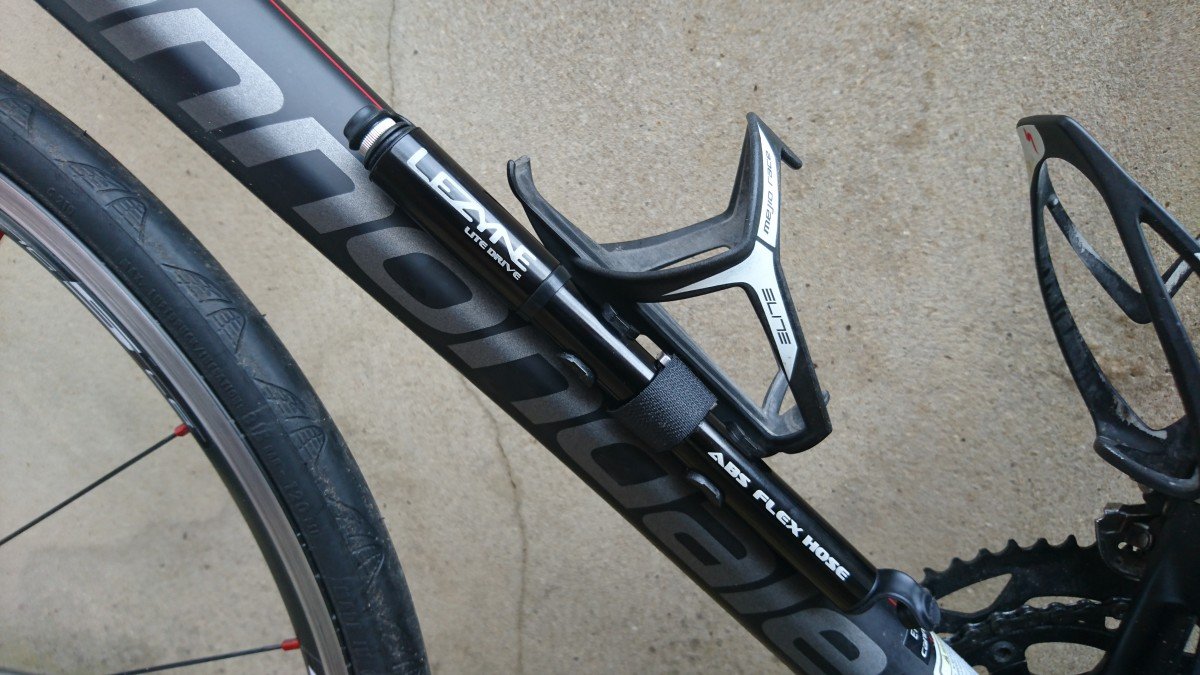 You may cover yourself by carrying a CO2 inflator which are great for an instant tyre inflation after fixing a puncture but you can never be too prepared especially on longer rides. Whether you choose to carry a pump in your jersey pocket or fit it to your bike - you should carry one! There are some great mini-pumps on the market that are compact and light weight and always on hand.
You may cover yourself by carrying a CO2 inflator which are great for an instant tyre inflation after fixing a puncture but you can never be too prepared especially on longer rides. Whether you choose to carry a pump in your jersey pocket or fit it to your bike - you should carry one! There are some great mini-pumps on the market that are compact and light weight and always on hand.
Tools
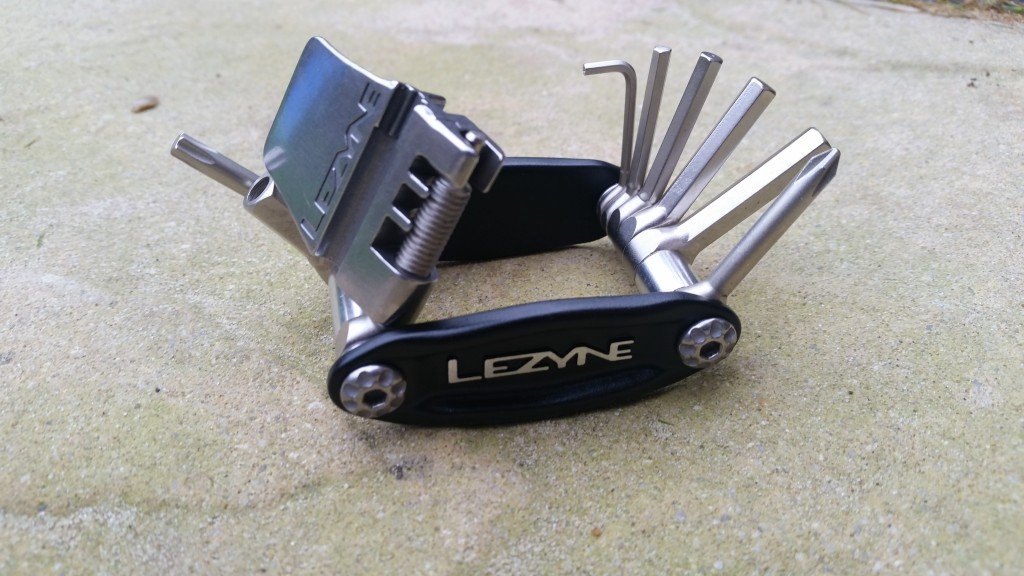 If you have read our Cycle Survival Kit article you will know that we recommend a number of things to carry with you on your ride. But in the Winter months, fit your bike with a saddle bag if you don't already have one. Fill it with the essential repair tools to cover most problems. This should include spare inner tube(s), tyre levers and repair patches. We like Park Tool's Super Patches. Carry a Multi-tool, preferably on with additions like a chain-link tool. The Lezyne CRV is a very good option and one we use personally.Tips: Cycling Survival Kit
If you have read our Cycle Survival Kit article you will know that we recommend a number of things to carry with you on your ride. But in the Winter months, fit your bike with a saddle bag if you don't already have one. Fill it with the essential repair tools to cover most problems. This should include spare inner tube(s), tyre levers and repair patches. We like Park Tool's Super Patches. Carry a Multi-tool, preferably on with additions like a chain-link tool. The Lezyne CRV is a very good option and one we use personally.Tips: Cycling Survival Kit
Lubrication & Cleaner
 If you are going to ride your bike outside over the course of the winter, it is going to get wet and muddy. This is regardless of how winterproof you have made it. Make sure you keep your bike clean as much as possible. This doesn't have to mean stripping the bike down to it's bearings after every ride. A 5 minute wash and rinse post-ride will keep your bike in good working order, with a more thorough clean using a good degreaser every few weeks. It is also extremely important to keep your chain lubricated and maintain drivetrain and components. Using a wet or all weather lubricant will help repel water and protect your chain from rust and corrosion.
If you are going to ride your bike outside over the course of the winter, it is going to get wet and muddy. This is regardless of how winterproof you have made it. Make sure you keep your bike clean as much as possible. This doesn't have to mean stripping the bike down to it's bearings after every ride. A 5 minute wash and rinse post-ride will keep your bike in good working order, with a more thorough clean using a good degreaser every few weeks. It is also extremely important to keep your chain lubricated and maintain drivetrain and components. Using a wet or all weather lubricant will help repel water and protect your chain from rust and corrosion.
Conclusion
As we always, these are our recommendations based on our own personal experiences. Hopefully you will find our tips to winterproof your bike usefully. The most important thing to remember about cycling in winter is to always use your best judgment before you head out - however prepared your bike is.Ride Safe!

